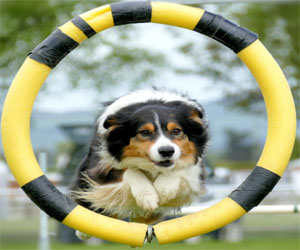


Understanding Feline Body Language

Cats are renowned for their expressive body language, which serves as a window into their thoughts, emotions, and intentions. While they may not communicate through spoken words, their movements, postures, and gestures reveal a wealth of information. In this article, we will delve into the fascinating realm of cat body language, exploring the various ways cats use their bodies to communicate.
1. Tail Position:
A cat's tail is a significant indicator of their mood and feelings. Different tail positions convey distinct messages:
Straight Up: When a cat holds its tail straight up, it's a sign of confidence and contentment. This posture often accompanies friendly greetings.
Puffed Up: A puffed-up tail is a classic sign of fear or agitation. Cats puff up their tails to appear larger and more intimidating in threatening situations.
Tucked Under: When a cat tucks its tail between its legs, it usually signifies submission or fear. It's a way for them to make themselves appear smaller.
Low And Quivering: A low, quivering tail can indicate excitement or anticipation. It's often seen in cats who are eagerly awaiting something, like playtime or a meal.
Slow Side-To-Side Swishing: This tail movement often signifies annoyance or irritation. It's a warning sign that the cat may become agitated if the source of their annoyance persists.
2. Ears:
A cat's ears are highly expressive and provide valuable insight into their mood:
Forward And Upright: Ears in this position indicate alertness and interest. Your cat is engaged and focused on something.
Flat And Backward: When a cat's ears are flat against their head, it usually signifies fear, aggression, or annoyance. This is a sign that the cat feels threatened or agitated.
3. Whiskers:
Whiskers play a role in a cat's sensory perception and body language:
Relaxed And Fanned Out: Whiskers that are relaxed and fanned out indicate contentment and relaxation.
Pulled Back Tightly: When a cat's whiskers are pulled back tightly against their face, it's often a sign of fear or aggression. The cat is trying to make itself appear smaller and less threatening.
4. Eye Contact:
Cats use eye contact to convey various messages:
Slow Blinking: A slow blink from a cat is a sign of trust and affection. It's often referred to as a "cat kiss" and is reciprocated by cat owners as a sign of love.
Direct Stare: Prolonged and direct eye contact can be seen as a challenge or a threat in cat language. It's best to avoid sustained eye contact in such situations.
5. Posture:
A cat's overall body posture provides important clues to their feelings:
Arched Back: An arched back, often with fur raised, is a sign of fear or aggression. It's a defensive posture that makes the cat appear larger and more intimidating.
Rolling Over: When a cat rolls onto its back, it may signal submission and trust. However, it's important to consider other cues, as some cats do this before playfully attacking.
Understanding and interpreting cat body language is an invaluable skill for cat owners. It enables you to build a deeper bond with your feline friend, anticipate their needs, and respond appropriately to their emotions. By paying attention to the nuances of tail position, ear and whisker orientation, eye contact, and overall posture, you can communicate effectively with your cat and ensure their well-being and comfort.
Nature's Enigmatic Canvas
 Geometric Precision
Geometric Precision
One of the most striking aspects of crop circle designs is the precision with which they are executed. The symmetry, mathematical ratios, and proportional accuracy found in many formations have left experts and enthusiasts alike in awe. The complexity of these patterns suggests a level of artistic and mathematical skill that challenges conventional explanations.
Symmetry And Symmetry Breaks
Symmetry is a common feature in crop circle patterns, with many formations exhibiting bilateral or radial symmetry. However, some crop circles also incorporate "symmetry breaks," where the pattern appears to intentionally deviate from perfect symmetry, introducing intriguing irregularities or asymmetrical elements.
Fractals And Self-Similarity
Fractal patterns are another fascinating component of crop circle designs. Fractals are complex shapes that exhibit self-similarity, meaning that they repeat similar patterns at different scales. These formations often evoke a sense of wonder, as the same design can be observed both in its overall shape and in its smaller components.
The Innovative World Of Waste-To-Energy Technology
 Diverse Sources Of Waste
Diverse Sources Of Waste
What makes the concept of turning trash into power so promising is the diversity of waste sources that can be utilized. It's not limited to just household waste; rather, it extends to agricultural and industrial waste streams. This versatility allows us to divert a significant portion of waste from landfills and turn it into a valuable resource.
Environmental Benefits
Waste-to-energy technology brings about a multitude of environmental benefits. Firstly, it reduces the need for landfill space, addressing the problem of limited landfill capacity.






 Key Drivers: Several key factors have propelled the growth of renewable energy. First and foremost is the increasing public awareness of climate change and its consequences. Citizens are demanding action, pushing governments and corporations to commit to renewable energy solutions. Additionally, advancements in technology have made renewable energy sources more efficient and cost-effective, further fueling their adoption.
Key Drivers: Several key factors have propelled the growth of renewable energy. First and foremost is the increasing public awareness of climate change and its consequences. Citizens are demanding action, pushing governments and corporations to commit to renewable energy solutions. Additionally, advancements in technology have made renewable energy sources more efficient and cost-effective, further fueling their adoption.
Solar Power: Solar energy has witnessed a spectacular rise in popularity. Solar panels have become more affordable and accessible, making it possible for homeowners and businesses to harness the power of the sun. Photovoltaic technology has experienced exponential growth, transforming the way we generate electricity. The world's largest solar power plants can now produce vast amounts of clean energy, reducing our reliance on fossil fuels.
Wind Power: Wind energy has also made significant strides, with the construction of wind farms onshore and offshore. Advances in wind turbine design and engineering have improved efficiency and energy output. Countries with favorable wind conditions are harnessing this resource to meet their energy needs.
 Training The Mind: Achieving dream awareness, particularly in the form of lucid dreams, often requires practice and training. Techniques such as reality checks, dream journaling, and intention setting can help individuals become more aware within their dreams.
Training The Mind: Achieving dream awareness, particularly in the form of lucid dreams, often requires practice and training. Techniques such as reality checks, dream journaling, and intention setting can help individuals become more aware within their dreams.
Embracing Emotional Intensity: Dream awareness often heightens the emotional intensity of dream experiences. Dreamers can feel an array of emotions, from euphoria to terror, and explore the depths of their psyche. This emotional richness allows for self-reflection and insight.
Scientific And Psychological Perspective: From a scientific and psychological standpoint, dream awareness challenges our understanding of consciousness. It showcases that aspects of self-awareness can persist even in states of altered consciousness, like dreaming.
Nightmares And Dream Awareness: In the case of nightmares, dream awareness can be a double-edged sword. While it may lead to the recognition that one is dreaming, it can also intensify the fear and anxiety experienced within the dream. However, this heightened awareness can ultimately help individuals confront and process their fears.
Practical Applications: Dream awareness, especially in the form of lucid dreaming, has practical applications. It can be used to overcome phobias, rehearse important events, and explore creative ideas. Some even use it as a form of entertainment, creating their own vivid adventures.
Spiritual And Metaphysical Interpretations: Various spiritual and metaphysical traditions consider dream awareness as a connection to higher states of consciousness. Some believe that dreams provide insights into the soul, offering guidance, wisdom, and glimpses into the universal collective unconscious.
Self-Exploration And Personal Growth: Dream awareness serves as a valuable tool for self-exploration and personal growth. By analyzing dream narratives, symbols, and emotions, individuals can gain deeper insights into their subconscious, unresolved conflicts, and even receive solutions to waking-life challenges.
Fact Or Fiction?
 The power of suggestion is at the heart of hypnosis, but it has its limits. During a hypnotic session, the subject is more receptive to suggestions, which can influence their thoughts, emotions, and behaviors to a certain extent. Hypnotherapy, for example, is used to address various issues such as smoking cessation, weight loss, and stress reduction by reinforcing positive suggestions in the subject's subconscious mind.
The power of suggestion is at the heart of hypnosis, but it has its limits. During a hypnotic session, the subject is more receptive to suggestions, which can influence their thoughts, emotions, and behaviors to a certain extent. Hypnotherapy, for example, is used to address various issues such as smoking cessation, weight loss, and stress reduction by reinforcing positive suggestions in the subject's subconscious mind.
However, even in a hypnotic state, the subject has the power to reject suggestions that go against their core values. In essence, the subject retains control over their actions and decisions. Ethical hypnotherapists are bound by strict guidelines to ensure they do not exploit this suggestive power to manipulate or harm their clients.
In rare cases, individuals with vulnerable or suggestible personalities may be more susceptible to external influence, even outside of hypnosis. Still, this does not equate to mind control but rather an increased responsiveness to external suggestions.
It's important to note that hypnosis cannot be used to extract confidential information, reveal hidden secrets, or manipulate individuals for malevolent purposes. The portrayal of mind control through hypnosis in fiction is often far removed from the real-world capabilities of this therapeutic technique.
Top Tips For Success
 2. Consistency Is Key: Consistency in training is vital. Use the same cues, commands, and techniques throughout your training sessions. Dogs respond well to predictability and repetition, so keeping things consistent helps them understand what is expected of them.
2. Consistency Is Key: Consistency in training is vital. Use the same cues, commands, and techniques throughout your training sessions. Dogs respond well to predictability and repetition, so keeping things consistent helps them understand what is expected of them.
3. Positive Reinforcement: Use positive reinforcement methods like treats, praise, and play to motivate and reward your dog during training. Dogs are more likely to learn and retain commands when they associate them with positive experiences.
4. Know The Rules: Familiarize yourself with the rules and regulations of the competition you're entering. Each event has specific guidelines and expectations, and understanding them is essential to ensure your dog's success.
5. Find A Qualified Trainer: Consider seeking the assistance of a professional dog trainer who specializes in the specific competition you're interested in. They can provide expert guidance and help you and your dog refine your skills.
6. Gradual Exposure: Gradually expose your dog to the competition environment. Start by practicing in familiar settings, then gradually introduce new elements, such as different locations, distractions, and other dogs.